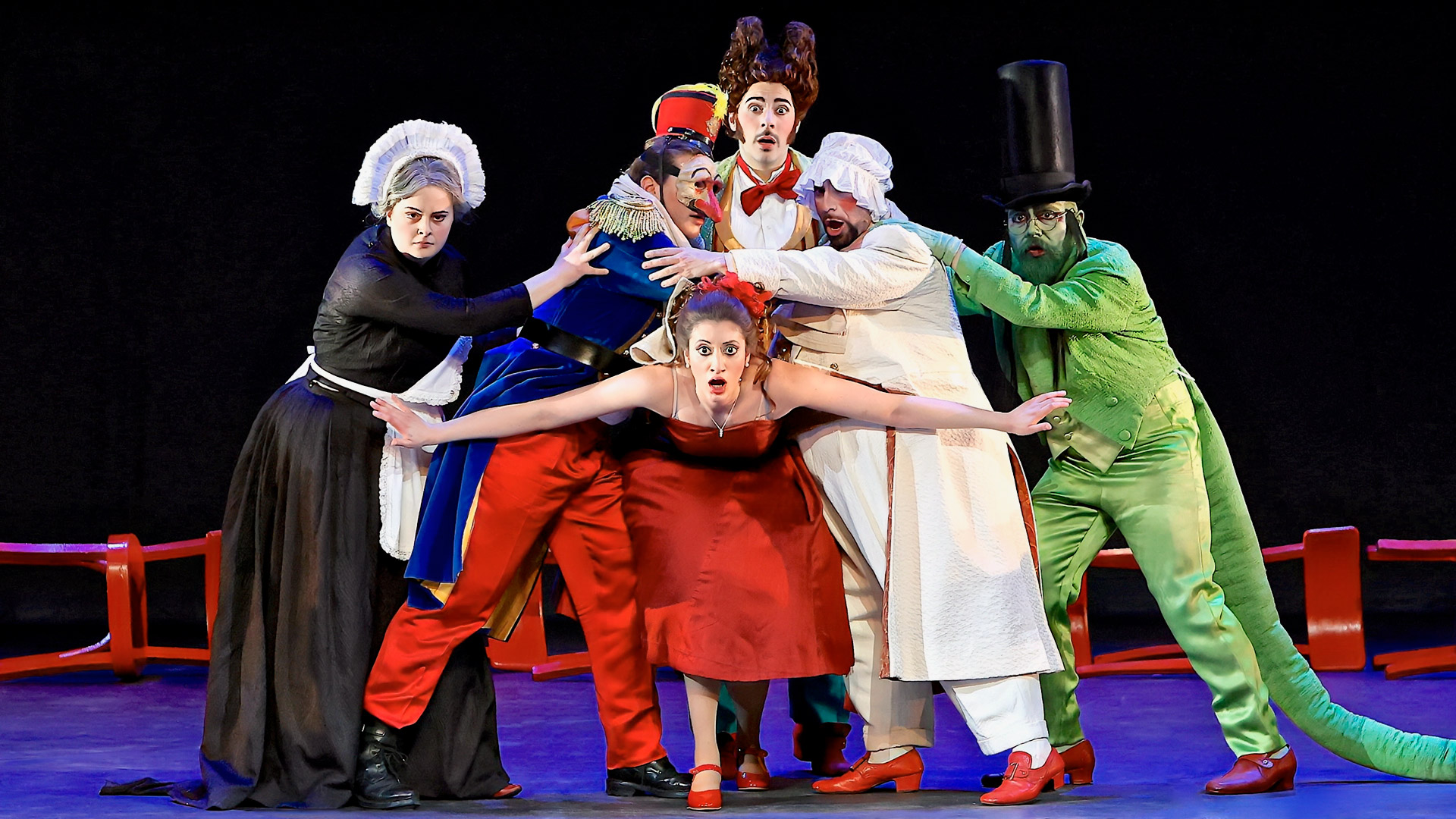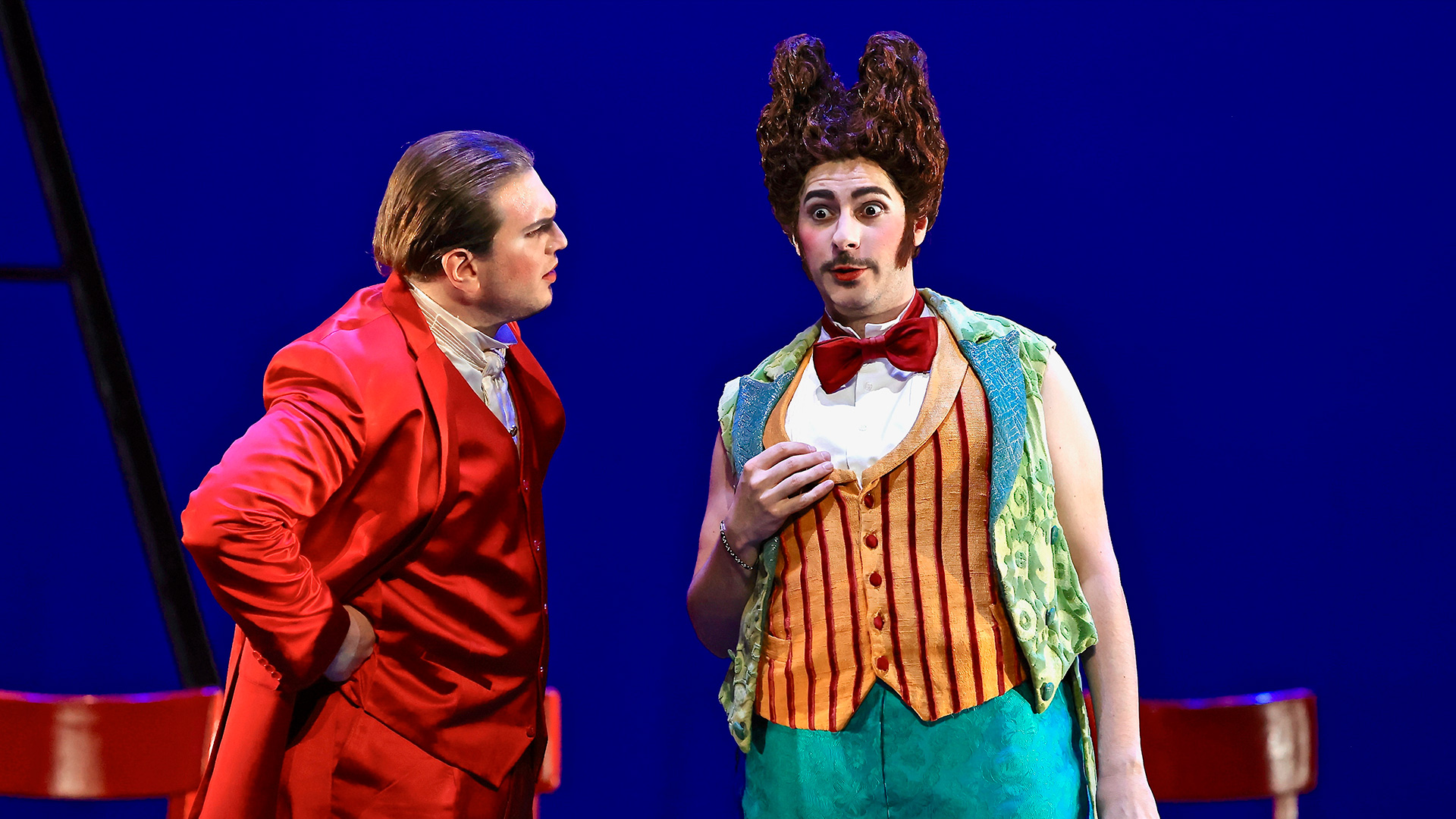Comic drama in two acts
Gioachino Rossini
libretto by Cesare Sterbini,
from Pierre Beaumarchais’s comedy
Soloists from Accademia di alto perfezionamento e inserimento professionale of Opera Carlo Felice Genova directed by Francesco Meli
Figaro
Carlo Sgura
Gabriele Barria (15/18/20)
Rosina
Greta Carlino
Giulia Alletto (15/18/20)
Il Conte d’Almaviva
Paolo Nevi
Manuel Caputo (15/18/20)
Don Bartolo
Gianpiero Delle Grazie
Willingerd Gimenez (15/18/20)
Don Basilio
Davide Sabatino
Antonino Arcilesi (15/18/20)
Berta
Gabriella Ingenito
Martina Saviano (15/18/20)
Fiorello
Ernesto de Nittis
An official
Angelo Parisi
Franco Rios Castro (15/18/20)
Conductor
and orchestrator
Giancarlo Andretta
Direction and set up
Damiano Michieletto
Direction taken by
Andrea Bernard
Costume designer
Carla Teti
Lighting design
Luciano Novelli
Produced byFondazione Teatro del Maggio Musicale Fiorentino
Orchestra, choir and technicians of Opera Carlo Felice Genova
Claudio Marino Moretti, choirsmaster
Master of recitatives Sirio Restani
Staging director
Luciano Novelli
Stage musical director
Andrea Solinas
Répétiteurs
Sirio Restani, Antonella Poli
Stage musical assistants
Andrea Gastaldo, Anna Maria Pascarella
other Choir Master
Patrizia Priarone
Lighting Master
Bernardo Pellegrini
Supertitle Master
Simone Giusto
Head of musical archives
Simone Brizio
Scenic director
Alessandro Pastorino
Vice scenic director
Sumireko Inui
Consolle supervisor
Andrea Musenich
Stage technicians foreman
Gianni Cois
Chief electrician/lighting booth
Marco Gerli
Tooling foreman
Tiziano Baradel
Audio/video foreman
Walter Ivaldi
Head of tailoring, shoemaking, make-up and wigs
Elena Pirino
Make-up and hair co-ordinator
Raul Ivaldi
Scenes, costumes and props
Fondazione Teatro del Maggio Musicale Fiorentino
Supertitles by
Fondazione Teatro Carlo Felice
Opera in brief
by Ludovica Gelpi
Il barbiere di Siviglia is a comic drama in two acts that Gioachino Rossini composed on commission from Francesco Sforza Cesarini between late 1815 and early 1816, for the Teatro Argentina in Rome. The barely 23-year-old composer was already one of the most successful opera composers of the time, and was simultaneously handling numerous requests. In December 1815, when he signed his contract with the Teatro Argentina, Torvaldo e Dorliska was being staged at the Teatro Valle in Rome, the following La gazzetta would be performed only a few months after Il barbiere. Sforza Cesarini’s commission envisaged a first performance of the new opera for the 1816 Carnival, so Rossini, together with librettist Cesare Sterbini, was able to complete the work in just two months and in time for the première, which took place on 20 February 1816. The choice of subject, Pierre Beaumarchais’ 1775 comedy of the same name, was rather daring, as Giovanni Paisiello’s 1782 version of Barbiere was well known to the public. Out of respect for the composer of the Neapolitan School, the first performance of Rossini’s Barbiere was held under the title Almaviva, or L’inutile precauzione.
The opera was a huge success right from the start – except for the first performance, where numerous Paisiello supporters booed Rossini – it was and remains to this day Rossini’s best-loved and most performed work.
Il barbiere di Siviglia is considered by many to be the opera buffa par excellence, representing almost all the narrative devices that characterise it. The plot unfolds amidst stratagems, disguises and deceptions, the lovers Conte d’Almaviva and Rosina are helped by their accomplice Figaro against the hostility of Don Bartolo and his trusted friend, Don Basilio. The characters retain their stereotypical traits, but each has a distinct and original characterisation. The Count alternates between moments as a ‘true comic tenor’, in which he declares his feelings with spontaneous naivety, and moments in which the mask seems to fall, with great candour the feignedly dreamy young man moves on to more or less subtle coercion and assertions of power. Rosina alternates between indecision and determination, indolence and brashness, but proves herself strong-willed enough to openly mock Don Bartolo. The latter is perhaps the most appropriately ‘funny’ character, gruff and jealous bass, perceptive in spotting deception even if unable to decipher it fully. Figaro, the most famous character, strides confidently forward trying to weave the plot, but it must be said that each of his stratagems fails miserably. Figaro’s machinations determine the affirmation of the stylistic features of opera buffa, but Rossini and Sterbini suggest not too veiledly and with great cynicism that the only effective means of resolving the conflict are status and money. It is clear that if, at the beginning of Act I, Count d’Almaviva had presented himself at Don Bartolo’s door demanding Rosina’s hand, no one would have been able to deny him, not the guardian and not even the girl. It is precisely in this key that the uniqueness of Rossini’s dramaturgy is determined: on the one hand, a magnificently accomplished exaltation of the comic genre, on the other, the ability to give it further depth by introducing a new level of interpretation.
The musical plane is the scene of an incredible variety of expression. Precisely because of the exorbitant number of engagements, Rossini often reused previously composed material – sometimes already part of other compositions, sometimes unpublished. The very imminence of the multiple deadlines played a fundamental role in spurring Rossini’s creativity, who wrote years later: ‘Wait until the evening before the day fixed for the performance. Nothing excites inspiration more than necessity, the presence of a copyist waiting for your work and the throng of an impresario in distress, tearing his hair out in locks. In my time in Italy all impresarios were bald by the age of thirty’. Rossini’s genius is thus revealed in his unparalleled ability to rework heterogeneous pieces into a new ‘whole’, within which variety and cohesion find equal space. The richness of styles emerges from the opening Symphony (originally composed for Aurelian in Palmyra, in 1813), a brilliant fresco of nuances and contrasts from the slow introduction to the Allegro that follows. The same applies to the vocal lines of the soloists and the choral parts – between syllabication and declamation, intense melodicism, pure belcanto. The constant and total synergy between orchestral and vocal writing is the foundation of the work’s expressive immediacy, which maintains a sustained narrative rhythm from end to end, flowing and always new and surprising.

The performance on Thursday 20 June 2024 is dedicated to the 30th Music Festival




